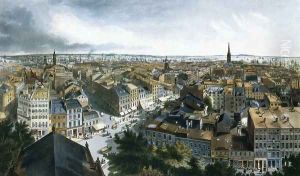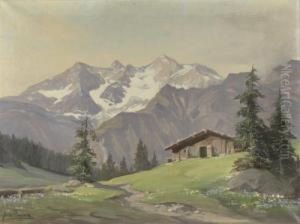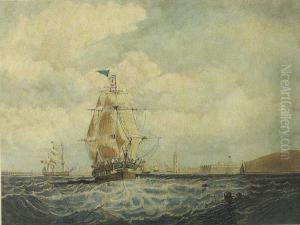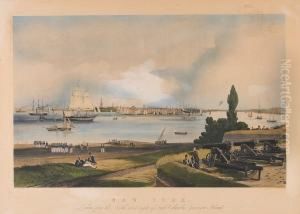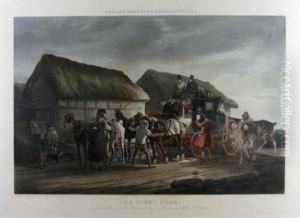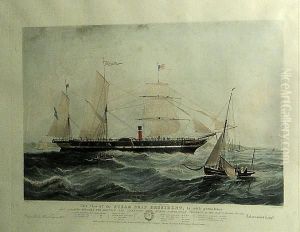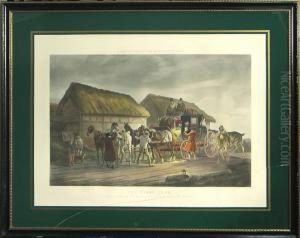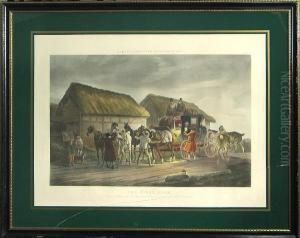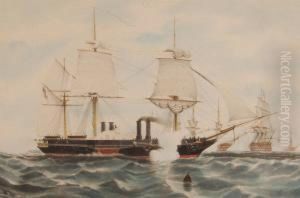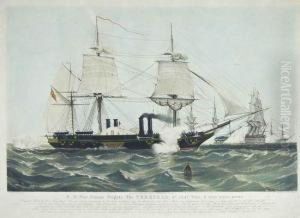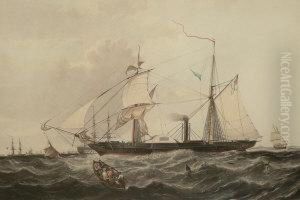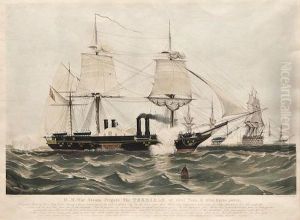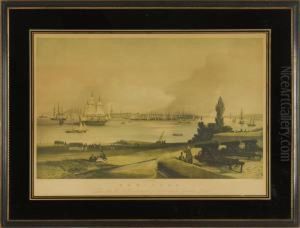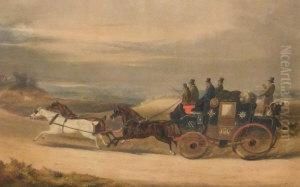Henry Papprill Paintings
Henry Papprill was an English engraver known for his exquisite aquatint works, primarily focusing on landscapes and marine subjects. Born in 1817, Papprill's contributions to the art of engraving spanned several decades of the 19th century, a period marked by significant transformations in the printmaking industry due to technological advancements. Despite the challenges posed by the rapidly evolving art scene of his time, Papprill managed to carve out a niche for himself, particularly in the realm of aquatint engraving, a technique that allowed for a more painterly representation of scenes compared to the more line-focused methods of earlier engraving techniques.
Papprill's career was notably characterized by his collaborations with prominent artists and publishers of the day. He often translated the works of well-known painters into aquatints, enabling their artworks to reach a broader audience through prints. Among his notable works were engravings after paintings by J.M.W. Turner, one of the most esteemed English Romantic painters, whose dynamic and atmospheric landscapes found a different, yet equally compelling, expression in Papprill's engravings.
In addition to his works after Turner, Papprill produced a significant number of engravings depicting naval and maritime scenes, reflecting the Victorian era's fascination with exploration, naval power, and the empire. His ability to capture the intricacy of ships and the tumultuous nature of the sea garnered admiration and respect from contemporaries and collectors alike.
Despite the popularity of his works during his lifetime, Henry Papprill, like many engravers of his era, did not always receive the same level of recognition as the original painters of the works he engraved. However, his contributions to the field of aquatint engraving have been reassessed and appreciated in more recent times, highlighting his technical skill and the role he played in the dissemination of 19th-century British art. Papprill's legacy is preserved in the collections of various museums and galleries, where his engravings continue to be appreciated for their beauty and historical value.
Henry Papprill passed away in 1896, leaving behind a body of work that remains a testament to his skill and dedication to the art of engraving. His engravings, particularly those after Turner and his maritime scenes, continue to be celebrated for their technical excellence and their ability to convey the spirit of the original paintings in a new medium.
